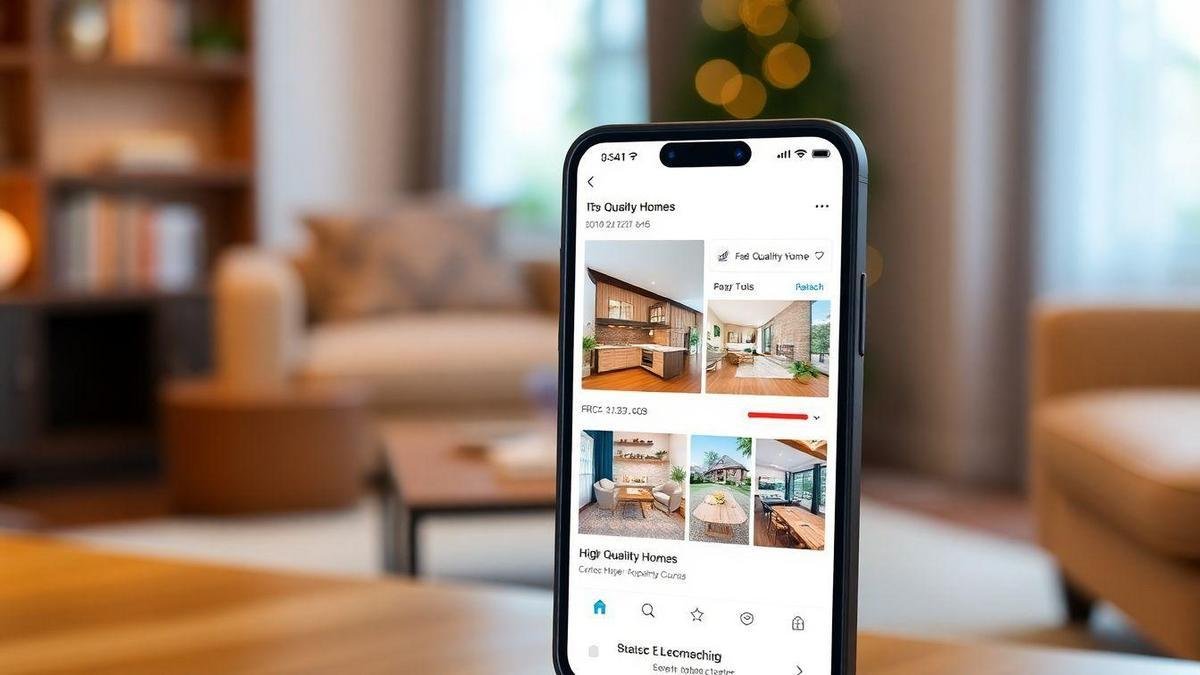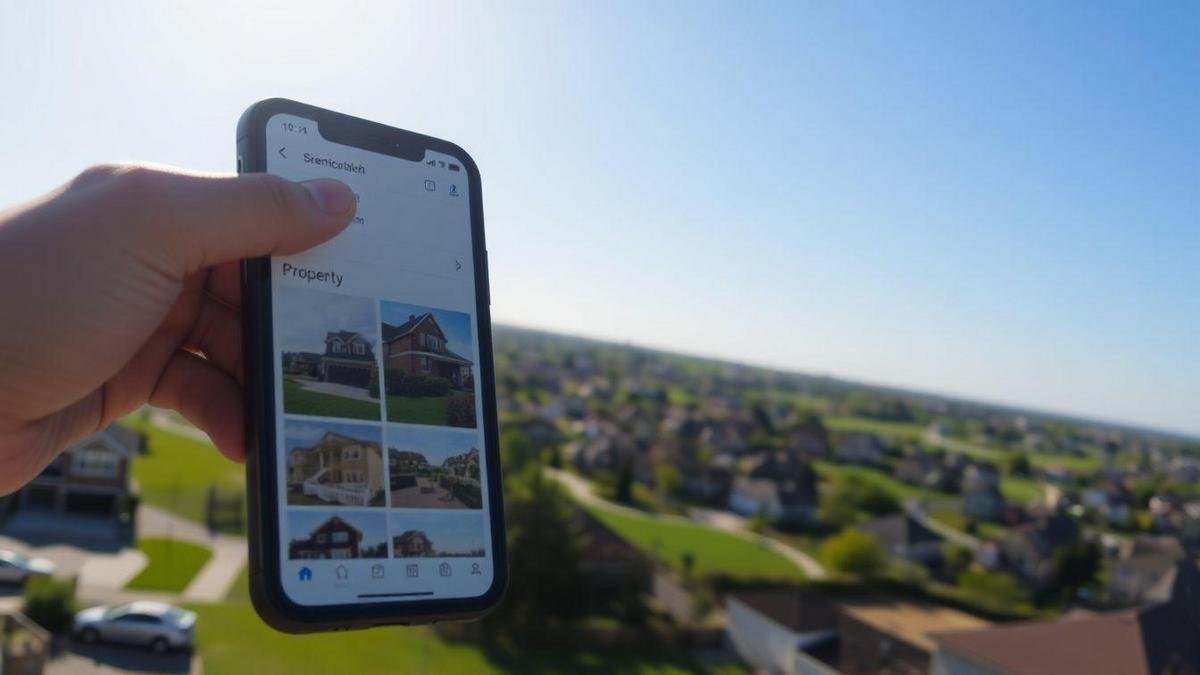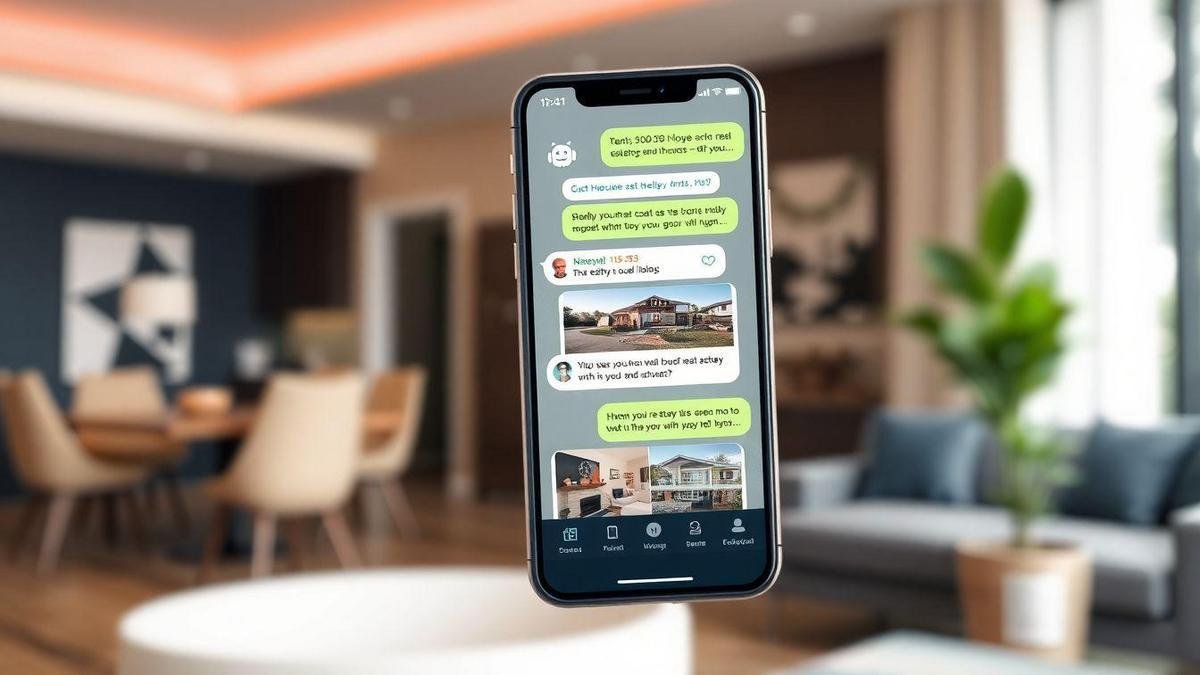Mobile-first real estate marketing trends provide agents with a clear, practical map to reach buyers on phones. It explains why mobile matters, showcases device and local usage, and reveals how to build mobile-optimized listings with fast photos and load speed. It covers short listing copy, responsive layouts, strong CTAs, mobile video and 3D tours, smooth hosting, and best formats. It walks through mobile IDX search, maps and filters, CRM sync, and smart chatbots and SMS alerts with compliance. It also outlines geo-targeted ads, AMP pages for speed, voice search tips, and the key metrics agents must track to excel in mobile marketing.
- They use fast, mobile-first websites for property listings.
- They create short vertical videos for mobile viewers.
- They enable chat and messaging for quick mobile leads.
- They add mobile-friendly virtual tours and maps.
- They track mobile behavior to enhance ads and listings.

Why Mobile Matters in Real Estate Marketing
Mobile Device Usage Stats for Property Seekers
In today’s fast-paced world, mobile devices are essential for property seekers. Recent statistics show that over 70% of home buyers use their smartphones to search for properties. This trend highlights the importance of focusing on mobile marketing in real estate.
Here are some key stats to consider:
| Statistic | Percentage |
|---|---|
| Smartphone usage for property search | 70% |
| Buyers who found their home on mobile | 40% |
| Mobile traffic on real estate websites | 60% |
These numbers clearly indicate that mobile is not just an option; it’s a necessity in real estate marketing.
Mobile-First Real Estate Marketing Trends and Local Stats
As the landscape of real estate marketing evolves, mobile-first strategies are becoming the norm. Many companies are adapting their websites to be mobile-friendly, ensuring a smooth experience for potential buyers searching for homes on their phones.
Local stats show that in urban areas, about 80% of property searches happen on mobile devices. This emphasizes the need for real estate professionals to tailor their marketing efforts to meet the demands of mobile users.
Key Metrics to Track for Mobile Performance
To measure the success of mobile marketing, certain key metrics should be tracked. These metrics help real estate agents understand how well their mobile strategies are performing. Key metrics include:
- Page Load Time: Faster pages keep users engaged.
- Bounce Rate: A lower bounce rate indicates users find what they need.
- Conversion Rate: This shows how many visitors take action, like contacting an agent.
Tracking these metrics provides insights into what works and what doesn’t in mobile marketing.

Mobile-Optimized Property Listings Design
Best Photo and Load Speed Practices for Listings
In the fast-paced world of real estate, photos are the first impression a potential buyer gets. High-quality images are essential. Here are some best practices:
- Use High-Resolution Images: Clear, vibrant photos draw attention and showcase the property’s best features.
- Optimize for Speed: Large images can slow down load times. Compress images without losing quality to maintain fast listings.
- Limit the Number of Photos: Too many images can overwhelm. Select the best ones that tell a story about the property.
| Strategy | Description |
|---|---|
| High-Resolution Images | Clear and vibrant photos capture attention. |
| Image Compression | Reduces load time while maintaining quality. |
| Selective Photo Use | Focus on the best images to avoid clutter. |
How Agents Write Short Descriptions for Mobile Readers
Mobile users often skim content. Therefore, agents need to craft short, punchy descriptions. Here’s how they do it:
- Get to the Point: Start with the most important details, such as the number of bedrooms, bathrooms, and unique features.
- Use Simple Language: Avoid jargon. Write in a way that everyone can understand.
- Highlight Key Features: Use bullet points for quick reading, helping to grab attention and convey information fast.
Responsive Layout and Calls-to-Action
A responsive layout is vital for mobile listings. This means the site adjusts to fit any screen size. Here are some key aspects:
- Easy Navigation: Users should find what they need without hassle. Menus should be simple and intuitive.
- Strong Calls-to-Action: Phrases like “Schedule a Tour” or “Contact Us” should stand out, guiding users on what to do next.
- Readable Fonts: Text must be easy to read on small screens, using larger fonts and ample spacing.
| Element | Importance |
|---|---|
| Responsive Design | Adapts to any device for better user experience. |
| Clear Navigation | Helps users find info quickly and easily. |
| Prominent Calls-to-Action | Encourages user interaction and engagement. |

Mobile Virtual Tours and Mobile Video Property Walkthroughs
Benefits of 3D and Virtual Tours on Phones
Mobile virtual tours and 3D experiences are transforming how potential buyers explore properties. These digital tools allow users to view homes from their smartphones, making property searches more convenient.
Some key benefits include:
- Accessibility: Buyers can explore properties anytime, anywhere.
- Engagement: Interactive tours keep users interested and engaged.
- Time-saving: Virtual tours cut down on time spent visiting multiple properties in person.
Imagine a busy buyer who can view ten homes in just one afternoon without leaving their couch. This convenience can lead to quicker decisions and happier clients.
Best Formats for Mobile Video Property Walkthroughs
When it comes to mobile video property walkthroughs, the format matters. The right format ensures that videos look great on any device. Here are some popular formats:
| Format | Description |
|---|---|
| MP4 | Widely supported and compresses well. |
| MOV | High quality but may be larger in file size. |
| AVI | Good quality but not as mobile-friendly. |
Choosing the right format can significantly impact how videos perform on mobile devices.
Hosting and Compression for Smooth Mobile Playback
To optimize mobile video playback, it is crucial to select the right hosting platform and compression method.
- Hosting: Use platforms like YouTube or Vimeo, designed for video streaming. They handle large traffic and ensure smooth playback.
- Compression: Tools like HandBrake can reduce file sizes without sacrificing quality. This is vital for mobile users with limited data plans.
By focusing on these elements, real estate professionals can provide a seamless viewing experience, keeping potential buyers engaged and informed.

Mobile IDX Search and Local Property Discovery
How Agents Use Mobile IDX Search on Apps and Sites
In the fast-paced world of real estate, agents rely heavily on Mobile IDX search through apps and websites. This technology allows them to showcase property listings in real time, making it easier for clients to find homes. For instance, when a buyer is on the go, an agent can quickly send listings via a mobile app that integrates IDX. This means clients have access to the latest properties right at their fingertips.
Agents can also customize their searches based on client preferences. By using mobile IDX, they can filter properties by price, location, and features, providing a more personalized experience for their clients.
Filters and Map Features That Help Mobile Buyers
Mobile buyers benefit significantly from the filters and map features available in IDX searches. These tools allow users to narrow down their options quickly. Here are some key features:
- Price Range: Buyers can set a budget and only see properties within that range.
- Property Type: Whether they want a condo, single-family home, or townhouse, buyers can filter accordingly.
- Location: Using maps, buyers can visualize where properties are located, making it easier to find homes in desirable neighborhoods.
The combination of these features makes searching for properties on mobile devices straightforward and efficient. Buyers can easily see what’s available in their preferred areas without wasting time on listings that don’t meet their criteria.
Integrating IDX with CRM on Mobile
Integrating IDX with Customer Relationship Management (CRM) systems on mobile devices is a game-changer for real estate professionals. This integration allows agents to manage leads and listings seamlessly. Agents can track client interactions and preferences, ensuring they stay informed about their clients’ needs.
For example, when a client shows interest in a specific property, the agent can quickly access their CRM to see previous communications. This helps agents provide timely follow-ups and relevant information, enhancing the overall client experience.
| Feature | Benefit |
|---|---|
| Real-time updates | Keeps agents informed about new listings |
| Client tracking | Helps agents personalize interactions |
| Easy communication | Enables quick responses to client inquiries |

Real Estate Chatbots for Mobile and Instant Messaging
How Chatbots Answer Common Property Questions
Chatbots in real estate serve as instant helpers for potential buyers and renters. They can handle a variety of questions, such as:
- What are the available properties?
- What is the price range?
- When can I schedule a viewing?
These chatbots provide quick responses, saving time for both clients and agents. For example, if a user asks about a specific property, the chatbot can instantly pull up details, allowing users to make informed decisions without waiting for a human response. This immediacy is crucial in the fast-paced real estate market.
SMS Property Alerts Versus Chat App Messages
When it comes to reaching clients, both SMS alerts and chat app messages have their strengths.
| Feature | SMS Alerts | Chat App Messages |
|---|---|---|
| Response Speed | Quick but limited interaction | Instant interaction with rich media |
| User Engagement | Lower engagement rates | Higher engagement with features like buttons |
| Accessibility | Works on any mobile phone | Requires internet access |
SMS alerts are effective for sending quick updates, such as new listings or price changes. However, chat app messages allow for deeper engagement, like sending photos or videos of properties. This interactivity can lead to more informed decisions.
Compliance and Opt-In Rules for Mobile Messaging
In the world of mobile marketing, compliance is key. Real estate businesses must follow specific rules regarding opt-in for messages. This means clients should agree to receive SMS or chat messages.
Here are some important points to consider:
- Clear Consent: Always ask for permission before sending messages.
- Easy Opt-Out: Clients should be able to stop messages easily.
- Privacy Protection: Keep client information secure and confidential.
Following these guidelines builds trust and keeps marketing efforts compliant.

Geo-Targeted Mobile Ads Real Estate and Location-Based Campaigns
How Agents Set Radius Targeting and Geofencing
In the competitive world of real estate, agents are increasingly leveraging geo-targeted ads to reach potential buyers. They can set radius targeting to focus on specific areas where their listings are located. For example, if a property is in a vibrant neighborhood, an agent might choose a radius of one mile around that property. This approach ensures that the ads reach individuals likely to be interested in that area.
Geofencing takes this a step further. It allows agents to create a virtual boundary around a location. When potential buyers enter this zone, they receive targeted ads on their mobile devices. This method is particularly effective during open houses or community events. By using these strategies, agents can connect with clients who are nearby and actively looking for properties.
Creative Tips for Geo-Targeted Mobile Ads Real Estate
To make the most of geo-targeted mobile ads, agents can employ several creative strategies:
- Use Eye-Catching Images: High-quality photos of properties can capture attention quickly.
- Include Local Insights: Highlight nearby amenities, schools, or parks to attract families.
- Limited-Time Offers: Create urgency with special promotions or discounts for quick responders.
- Tailored Messaging: Personalize the ad content based on the audience’s interests or demographics.
These tactics can help agents stand out in a crowded market, making their ads more appealing to potential buyers.
Measuring Foot Traffic and Ad Attribution
Understanding the impact of geo-targeted ads is crucial. Agents can measure foot traffic to see how many people visited a property after seeing an ad. This data helps gauge the effectiveness of their campaigns.
Ad attribution is another important aspect. It tracks which ads led to actual visits or inquiries. By analyzing this information, agents can refine their strategies and focus on what works best.
| Metric | Description |
|---|---|
| Foot Traffic | Number of visitors to a property after an ad |
| Ad Attribution | Links ad exposure to buyer actions |

AMP Property Pages and Page Speed for Mobile SEO
How AMP Reduces Load Time on Mobile
Accelerated Mobile Pages (AMP) are a game-changer in speeding up website load times on mobile devices. By using a streamlined version of HTML, AMP pages load almost instantly. This is vital for real estate agents who want potential buyers to access property listings without delay. Studies show that 53% of mobile users abandon a site if it takes longer than three seconds to load. With AMP, agents can keep visitors engaged and reduce bounce rates.
When Agents Should Use AMP Property Pages
Real estate agents should consider using AMP property pages when:
- They want to improve user experience on mobile devices.
- Their target audience primarily uses smartphones.
- They aim to boost their search engine rankings.
Using AMP can be particularly beneficial during high-traffic periods, such as open houses or property launches, when many potential buyers are browsing listings simultaneously.
SEO Signals and Structured Data for AMP Pages
AMP pages not only enhance speed but also send strong SEO signals to search engines. These pages can incorporate structured data, which helps search engines understand the content better. This can lead to rich snippets in search results, making listings more appealing to potential buyers. Here’s a quick comparison of traditional pages versus AMP pages:
| Feature | Traditional Pages | AMP Pages |
|---|---|---|
| Load Time | Slower | Faster |
| SEO Signals | Weaker | Stronger |
| User Engagement | Lower | Higher |
| Mobile Optimization | Limited | Enhanced |
Using AMP can be a strategic move for agents looking to stay ahead in the mobile-first real estate marketing trends.

Voice Search Optimization Real Estate and Mobile Voice Queries
Common Voice Search Phrases Buyers Use
In the fast-paced world of real estate, voice search is becoming a game-changer. Buyers often use phrases that reflect their needs. Common examples include:
- “Find homes near me”
- “What are the best neighborhoods in [City]?”
- “How much is my house worth?”
- “List of open houses today”
- “What are the mortgage rates?”
These phrases are typically conversational. Buyers want quick answers, and they expect agents to understand these queries.
How Agents Optimize FAQs and Local Schema for Voice
Agents can improve their visibility in voice searches by focusing on FAQs and local schema.
- FAQs: By creating a list of frequently asked questions, agents can directly address buyer concerns. This content should be clear and concise. For instance, answering questions like “What is the buying process?” can lead to better engagement.
- Local Schema: Implementing local schema markup helps search engines understand the agent’s location and services. This can boost local search rankings. For example, using schema for property listings can make it easier for buyers to find relevant information.
Tracking Voice-Driven Leads in Analytics
Tracking the effectiveness of voice search is crucial. Agents can use tools like Google Analytics to monitor voice-driven leads. Here’s how:
| Metric | Description |
|---|---|
| Sessions | Total visits from voice searches |
| Bounce Rate | Percentage of visitors leaving quickly |
| Conversion Rate | Percentage of leads generated |
By analyzing these metrics, agents can refine their strategies. Understanding how buyers interact through voice search can lead to better marketing efforts.

SMS Property Alerts and Mobile Lead Nurturing Strategies
Best Timing and Frequency for SMS Property Alerts
When it comes to SMS property alerts, timing and frequency are crucial. Agents should consider sending messages during the daytime, specifically between 10 AM and 6 PM. This timeframe typically aligns with when potential buyers are most likely to engage with their phones.
In terms of frequency, sending one to three messages per week strikes a good balance. Too many messages can overwhelm leads, while too few can lead to missed opportunities. A well-timed alert can spark interest and prompt action.
| Timing | Recommended Frequency |
|---|---|
| Daytime (10 AM – 6 PM) | 1 to 3 messages/week |
How Agents Personalize Mobile Messages for Leads
Personalization is key in crafting effective mobile messages. Agents can tailor their SMS communications by using the lead’s name and referencing their specific interests. For instance, if a client is interested in three-bedroom homes, the agent can highlight properties that meet that criterion.
Additionally, including local market insights or property features that resonate with the lead’s preferences can make messages feel more relevant. This approach not only captures attention but also fosters a sense of connection.
Conversion Metrics and Follow-Up Paths
To measure the success of SMS alerts, agents should track conversion metrics. Key metrics include response rates, click-through rates, and conversion rates. By analyzing these figures, agents can adjust their strategies to improve effectiveness.
Follow-up paths are also essential. After sending an SMS alert, agents should have a clear plan for follow-up. This could involve a phone call, a personalized email, or another SMS. The goal is to keep the conversation going and guide leads through the buying process.
| Metric | Description |
|---|---|
| Response Rate | Percentage of leads who reply |
| Click-Through Rate | Percentage of leads clicking links |
| Conversion Rate | Percentage of leads making a purchase |
In the End…
Mobile-first real estate marketing is not just a trend; it is a necessity for success in today’s market. As the statistics demonstrate, a significant majority of buyers rely on their smartphones to navigate property searches, making it imperative for agents to adopt mobile-optimized strategies. From utilizing high-quality images and responsive layouts to integrating chatbots and geo-targeted ads, every element plays a crucial role in enhancing the buyer’s experience.
Moreover, by focusing on key metrics and leveraging tools like AMP pages and voice search optimization, real estate professionals can ensure they remain competitive. As the landscape continues to evolve, those who embrace these innovative techniques will not only meet the demands of their clients but also stand out in a crowded marketplace.
For more insights and strategies on navigating the ever-changing world of real estate marketing, readers are invited to explore additional articles at RealHubly.
Eduardo Bugallo, PhD.

No responses yet